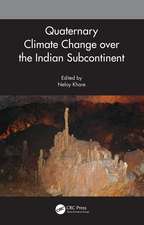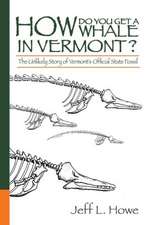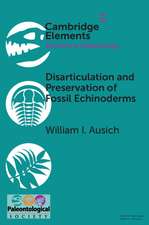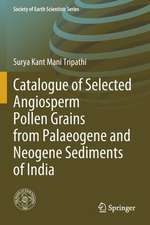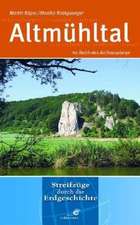Bryozoan Studies 2010: Lecture Notes in Earth System Sciences, cartea 143
Editat de Andrej Ernst, Priska Schäfer, Joachim Scholzen Limba Engleză Paperback – 18 iul 2014
| Toate formatele și edițiile | Preț | Express |
|---|---|---|
| Paperback (1) | 946.87 lei 6-8 săpt. | |
| Springer Berlin, Heidelberg – 18 iul 2014 | 946.87 lei 6-8 săpt. | |
| Hardback (1) | 967.88 lei 6-8 săpt. | |
| Springer Berlin, Heidelberg – 5 iun 2012 | 967.88 lei 6-8 săpt. |
Preț: 946.87 lei
Preț vechi: 1154.72 lei
-18% Nou
Puncte Express: 1420
Preț estimativ în valută:
181.20€ • 196.76$ • 152.21£
181.20€ • 196.76$ • 152.21£
Carte tipărită la comandă
Livrare economică 22 aprilie-06 mai
Preluare comenzi: 021 569.72.76
Specificații
ISBN-13: 9783642439490
ISBN-10: 3642439497
Pagini: 460
Ilustrații: XVIII, 442 p.
Dimensiuni: 155 x 235 x 24 mm
Greutate: 0.64 kg
Ediția:2013
Editura: Springer Berlin, Heidelberg
Colecția Springer
Seria Lecture Notes in Earth System Sciences
Locul publicării:Berlin, Heidelberg, Germany
ISBN-10: 3642439497
Pagini: 460
Ilustrații: XVIII, 442 p.
Dimensiuni: 155 x 235 x 24 mm
Greutate: 0.64 kg
Ediția:2013
Editura: Springer Berlin, Heidelberg
Colecția Springer
Seria Lecture Notes in Earth System Sciences
Locul publicării:Berlin, Heidelberg, Germany
Public țintă
Professional/practitionerCuprins
1. Distribution over Space and Time in Epizoobiontic North Sea Bryozoans.- 2. The World´s Oldest-Known Bryozoan Reefs: Late Tremadocian, mid-Early Ordovician: Yichang, Central China.- 3. Molecular Distance and Morphological Divergence in Cauloramphus (Cheilostomata: Calloporidae.- 4. Acanthocladia (Rhabdomesina, Cryptostomata) from the Devonian of Europe.- 5. Growth Rates, Age Determination and Calcification Levels in Flustra foliacea (L.) (Bryozoa: Cheilostomata) – Preliminary Assessment.- 6. Life on the Edge – Parachnoidea (Ctenostomata) and Barentsia (Kamptozoa) on Bathymodiolin Mussels from an Active Submarine Volcano in the Kermadec Volcanic Arc.- 7. Occurrence and Identity of “White Spots” in Phylactolaemata.- 8. Testing Habitat Complexity as a Control over Bryozoan Colonial Growth Form and Space Distribution.- 9.- Distribution and Diversity of Erect Bryozoan Assemblages along the Pacific Coast of Japan.- 10. Epizoic Bryozoans on Predatory Pycnogonids from the South Orkney Islands, Antarctica: “If you can´t beat them, join them”.- 11. Growth Rate of Selected Sheet-Encrusting Bryozoan Colonies along a Latitudinal Transect – Preliminary Results.- 12. Patterns of Magnesium-Calcite Distribution in the Skeleton of some Polar Bryozoan Species.- 13. Seagrass-Associated Bryozoan Communities from the Late Pliocene of the Island of Rhodes (Greece).- 14. A New Species of the Genus Electra (Bryozoa, Cheilostomata) from Southern Oman, Arabian Sea.- 15. Molecular Phylogenetic Analysis Confirms the Species Status of Electra verticillata .- 16. Large Sediment Encrusting Trepostome Bryozoans from the Permian of Tasmania, Australia.- 17. Bryozoan Communities and Thanatocoenoses from Submarine Caves in the Plemmirio Marine Protected Area (SE Sicily).- 18. The Genus Sparsiporina d´Orbigny, 1852 (Bryozoa, Cheilostomata), Late Eocene to Holocene.- 19. Species of Alcyonidium (Ctenostomatida) from the Pacific Caves of North America: a Preliminary Account.- 20.Distribution and Zoogeography of Cheilostomate Bryozoa along the Pacific Coast of Panama: Comparison between the Gulf of Panama and Gulf of Chiriqui.- 21. High Resolution Non-Destructive Imaging Techniques for Internal Fine Structure of Bryozoan Skeletons.- 22. Being a Bimineralic Bryozoan in an Acidifying Ocean.- 23. Hornera striata Milne Edwards, 1838, a British Pliocene Cyclostome Bryozoan Incorrectly Recorded from New Zealand, with Notes on some Non-Fenestrate Hornera from the Coralline Crag.- 24. Schizomavella grandiporosa and Schizomavella sarniensis: two Cryptic Species.- 25. A diverse Bryozoan Fauna from Pleistocene Marine Gravels at Koromatsunai, Hokkaido, Japan.- 26. Early Carboniferous Bryozoans from Western Siberia, Russia.- 27. The Use of Early Miocene Bryozoans Fauna Affinities in the Central Paratethys for Inferring Climatic Change and Seaway Connections.- 28. Palaeoecology, Preservation and Taxonomy of Encrusting Ctenostome Bryozoans Inhabiting Ammonite Body Chambers in the Late Cretaceous Pierre Shale of Wyoming and South Dakota, USA.- 29. Krka River (Croatia): Case Study of Bryozoan Settlement from Source to Estuary.
Textul de pe ultima copertă
Bryozoa are a colonial animal phylum with a long evolutionary history, having existed from the early Ordovician (480 My) onward and still flourishing today. Several mass extinctions in earth history shaped and triggered bryozoan evolution through drastic turnover of faunas and new evolutionary lineages. Bryozoa are widespread across all latitudes from Equator to Polar Regions and occur in marine and freshwater environments. They are shaping benthic ecosystems and recording ambient environmental conditions in their skeletons. The book provides a synthesis of the current main topics of research in the field of Bryozoology including combined research on both extant, and extinct taxa. Fields or current research span molecular genetics and phylogeny, life history, reproduction and anatomy, biodiversity and evolutionary patterns in time and space, taxonomy, zoogeography, ecology, sediment interactions, and climate response.
Caracteristici
Unique book on the subject Synthesis of many new fields Fascinating mix of research on life forms














